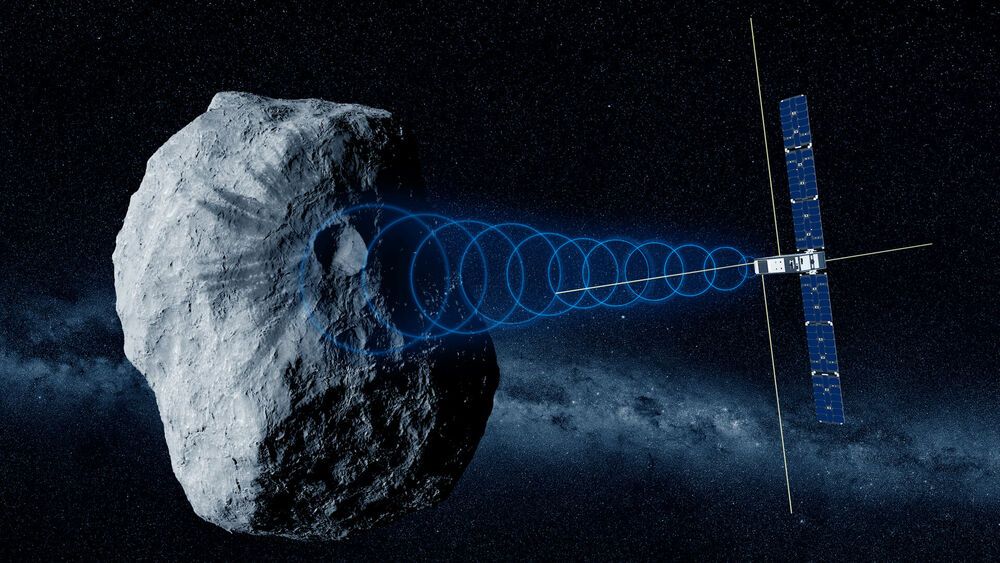.jpg)
OCTOBER 2024: A NEW CHAPTER IN PLANETARY DEFENCE UNFOLDS
We are on a Mission to Unravel Space's Mysteries
and Protect Our Home, Planet Earth

The year 2024 marks a turning point. In October, the HERA mission with the Juventas CubeSat – a testament to human ingenuity and a symbol of hope – launches into deep space on a potentially life-changing journey. Led by the European Space Agency (ESA) in collaboration with GomSpace and other partners, this mission goes far beyond mere scientific exploration. The mission is a call to action; a commitment to safeguarding future generations from potential threats lurking in the vast expanse of space.
The Need for Planetary Defense
Imagine a giant space rock hurtling towards Earth. While this might sound like science fiction, it is a very real possibility. Our solar system is littered with leftover debris from its formation – asteroids – and some have the potential to cause widespread devastation upon impact. While organizations like NASA and ESA keep watch with powerful telescopes, there are over 1.3 million known asteroids out there, and even a small one could cause significant damage.
Building on Success: Echoes of DART
The scientific community is making significant progress against the threat of asteroid impacts. Missions like DART (Double Asteroid Redirection Test), launched in November 2021, were a resounding success. DART's impact on the asteroid Dimorphos altered its orbit around Didymos by 32 minutes. This "cosmic bump" effectively shortened Dimorphos' orbit, demonstrating the viability of deflecting near-Earth objects (NEOs).
The European Space Agency's HERA mission, with Juventas as a key player, takes us a crucial step beyond DART.

(Photo Credit: ESA/Science Office)
The Juventas Mission: A Deeper Look
Juventas is like sending an X-ray machine to an asteroid! Juventas carries a groundbreaking low-frequency radar called JuRa. Unlike traditional high-frequency radars, JuRa uses longer wavelengths to see deep beneath the surface, revealing the asteroid's hidden structure. This allows scientists to map Dimorphos' internal composition. This information is crucial for understanding how asteroids form and, more importantly, how they might behave upon impact with Earth.
Gravity Gets Gauged: Expose the Mass and Mystery
But the Juventas does not end there. It also employs a radio science experiment. Imagine the Juventas satellite and its larger companion, the Hera mothership, as partners in a cosmic dance. By precisely measuring the tiny wobbles in their trajectories as they orbit the asteroid, scientists can map Dimorphos' gravity field. This not only reveals the asteroid's mass but also hints at its internal density distribution – a vital clue to its composition.
A Daring Descent: Landing on an Asteroid
Perhaps the most daring aspect of Juventas is its attempt to land on the surface of Dimorphos. Juventas will use its delicate thrusters for precise maneuvering to gently touch down. Once settled, a three-axis gravimeter onboard Juventas will measure the surface gravity with unprecedented accuracy. If successful, this could provide valuable data on the asteroid's material properties in this ultra-low gravity environment, helping us understand how these bodies might behave if they ever encountered Earth.
A Collaborative Triumph: A Union of Expertise
The Juventas mission is a shining example of international collaboration. Led by the European Space Agency (ESA), the mission benefits from the expertise of numerous partners. GomSpace, a leading innovator in small spacecraft, takes center stage by designing, building, and operating the Juventas CubeSat itself. Our expertise in miniaturization allows for a powerful scientific package within the compact confines of a 6U CubeSat. Other partners bring their specialized knowledge in instruments and mission operations, creating a truly global effort.
The Road Ahead: Paving the Way for Future Missions
The data collected by Juventas will be a game-changer for planetary defense. By providing a detailed picture of Dimorphos' interior and surface, scientists can refine asteroid deflection models, allowing for more effective strategies in the future. Imagine having a detailed blueprint of an asteroid before we ever need to deflect it! The success of Juventas will pave the way for even more ambitious missions, potentially involving deflecting larger or faster-moving asteroids.
_ _ _ _ _ _ _
This is just a glimpse into the intricate workings of the Juventas mission. As it embarks on its historic journey in October 2024, the entire world will be watching with anticipation. The potential rewards are immense, ushering in a new era of proactive planetary defense and a deeper understanding of the celestial bodies that share our solar system.
_ _ _ _ _ _ _

